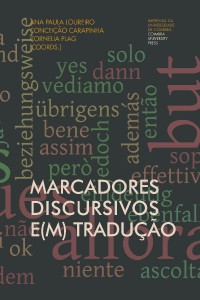Please use this identifier to cite or link to this item:
https://hdl.handle.net/10316.2/90219| Title: | Cuestiones retórico-traductológicas de los marcadores del discurso (y de su ausencia), ejemplificadas en la traducción española de Atemschaukel (Herta Müller) | Authors: | Gil, Alberto | Keywords: | discourse markers;literary translation;interpretation;hermeneutics;creativity;marcadores discursivos;traducción literaria;interpretación;hermenéutica;creatividad | Issue Date: | 2017 | Publisher: | Imprensa da Universidade de Coimbra | Journal: | http://hdl.handle.net/10316.2/43261 | Abstract: | Discourse markers (DM) play an important role in the processing of information. They are therefore a significant topic of research in Text Linguistics and Translation Studies. Research into not only their presence but their absence is important and in particular their implicit use for conveying subtle and even poetic instructions. This implicit use of DMs has occasionally been the subject of studies in Text Linguistics, but not in Translation. This paper intends to promote this research, establishing initially the theoretical basis of Translation Studies and applying them to the translation into Spanish of Herta Müller’s subtle and poetic novel Atemschaukel. In this study, the explicitness of some of the DMs results in the loss of poetic nuance and the objectivation of the translated text turns some parts of the original into rather technical utterances. We propose a translation method in which there is a greater correspondence between hermeneutics and creativity, observing this relationship bidirectionally, in other words, starting with the creativity which leads to a better comprehension of the original. Los marcadores discursivos (MD) cumplen la importante función de procesar la información. Por eso son un apreciado campo de investigación tanto en la lingüística del texto como en la traductología. Para su estudio importa tanto su presencia como su ausencia, es decir su uso implícito, ya que este último puede transportar instrucciones sutiles e incluso poéticas. En Lingüística se ha tratado esporádicamente esta falta de explicitud en los MD, pero en Traductología no se ha trabajado aún sobre el tema. En el presente artículo se intenta impulsar este estudio poniendo las bases teórico-traductológicas correspondientes y aplicándolas a la traducción española de la sutil y poética novela de Herta Müller, Atemschaukel. En este estudio puede ya entreverse cómo la necesidad de explicitud de ciertos MD en la traducción lleva o bien a la pérdida de matices poéticos o a una objetivación del texto que lo va convirtiendo en casi técnico. Se propone una mayor correspondencia entre hermeneútica y creatividad, observando esta relación bidireccionalmente, es decir, partiendo de que la creatividad que lleva a una mejor comprensión del original es la mejor forma de traducir. |
URI: | https://hdl.handle.net/10316.2/90219 | ISBN: | 978-989-26-1445-8 978-989-26-1446-5 (PDF) |
DOI: | 10.14195/978-989-26-1446-5_3 | Rights: | open access |
| Appears in Collections: | Marcadores discursivos e(m) tradução |
Files in This Item:
| File | Description | Size | Format | |
|---|---|---|---|---|
| cuestiones_retorico-traductologicas_de_los_marcadores.pdf | 1.76 MB | Adobe PDF |  |
Items in DSpace are protected by copyright, with all rights reserved, unless otherwise indicated.
